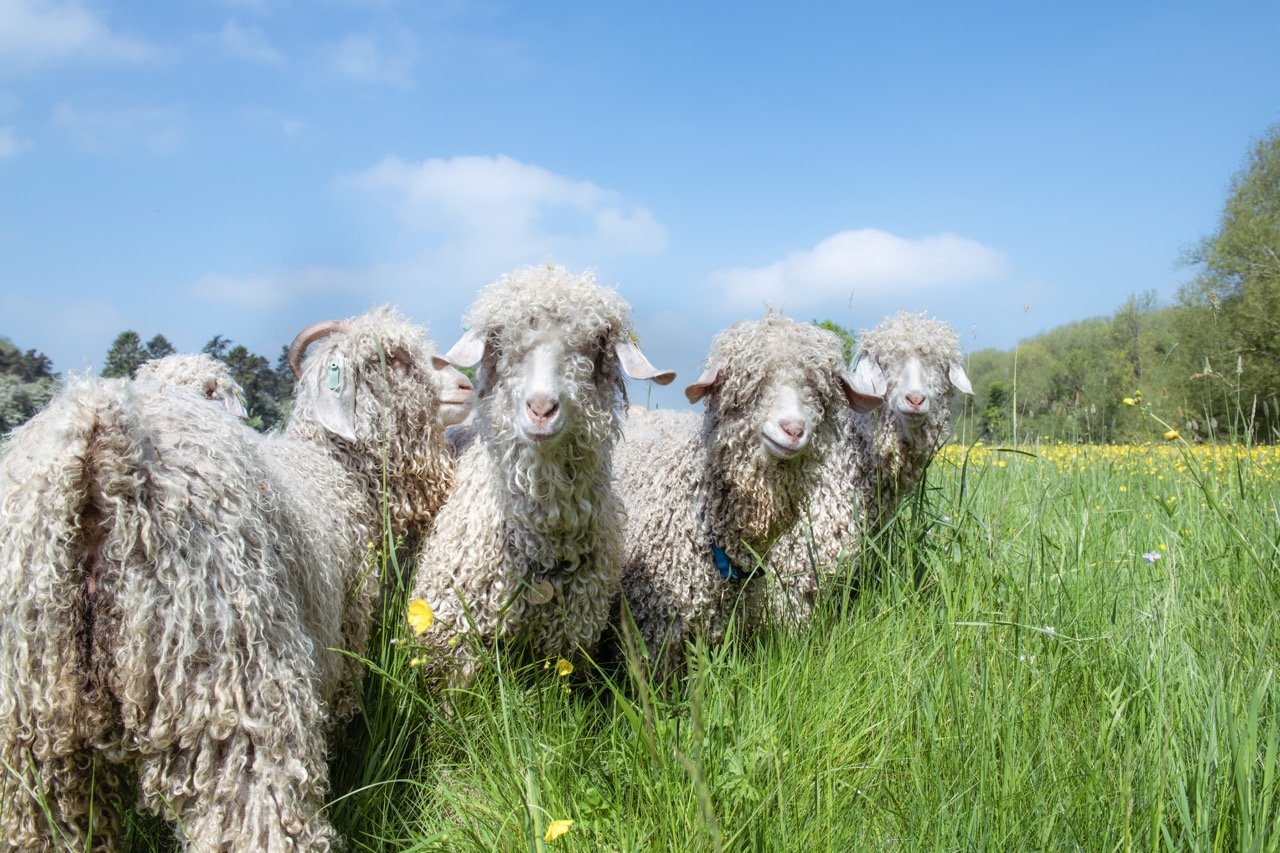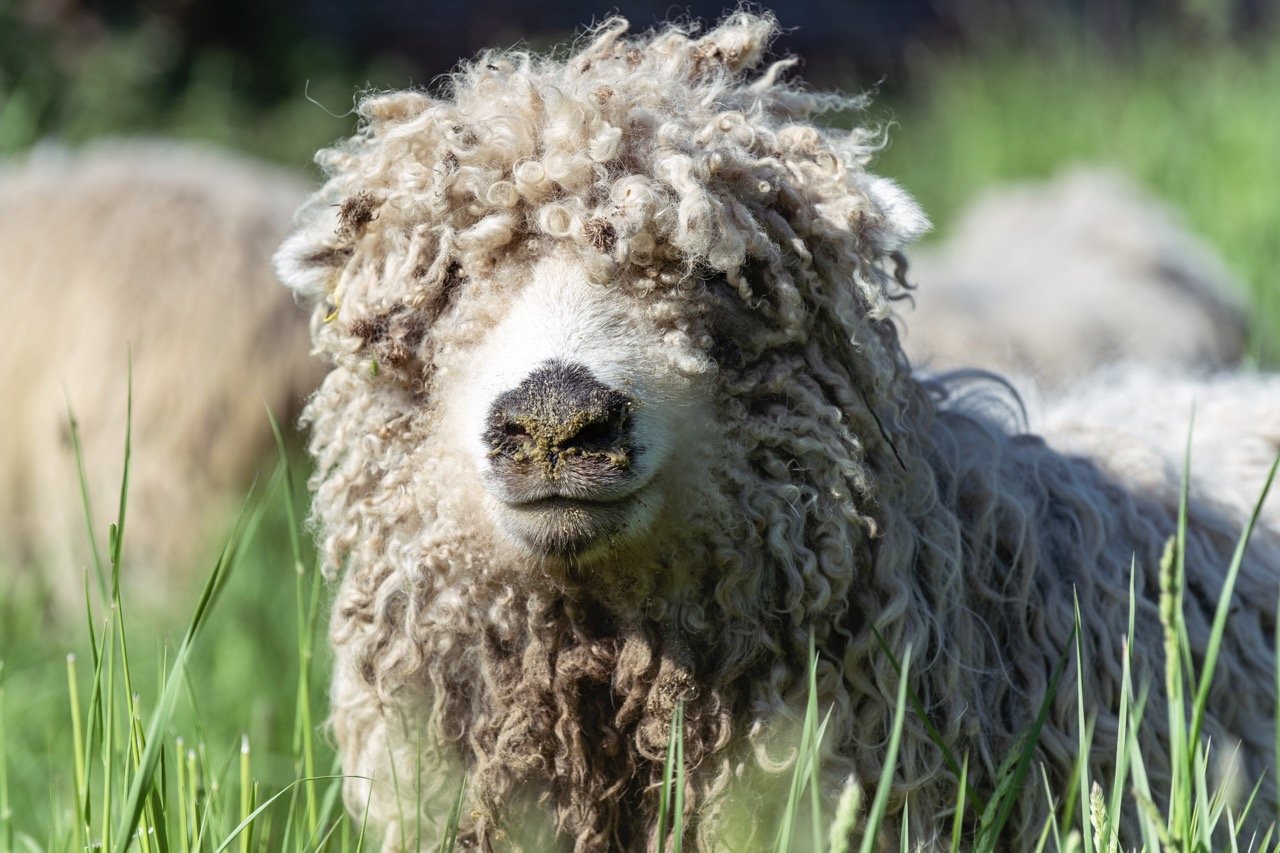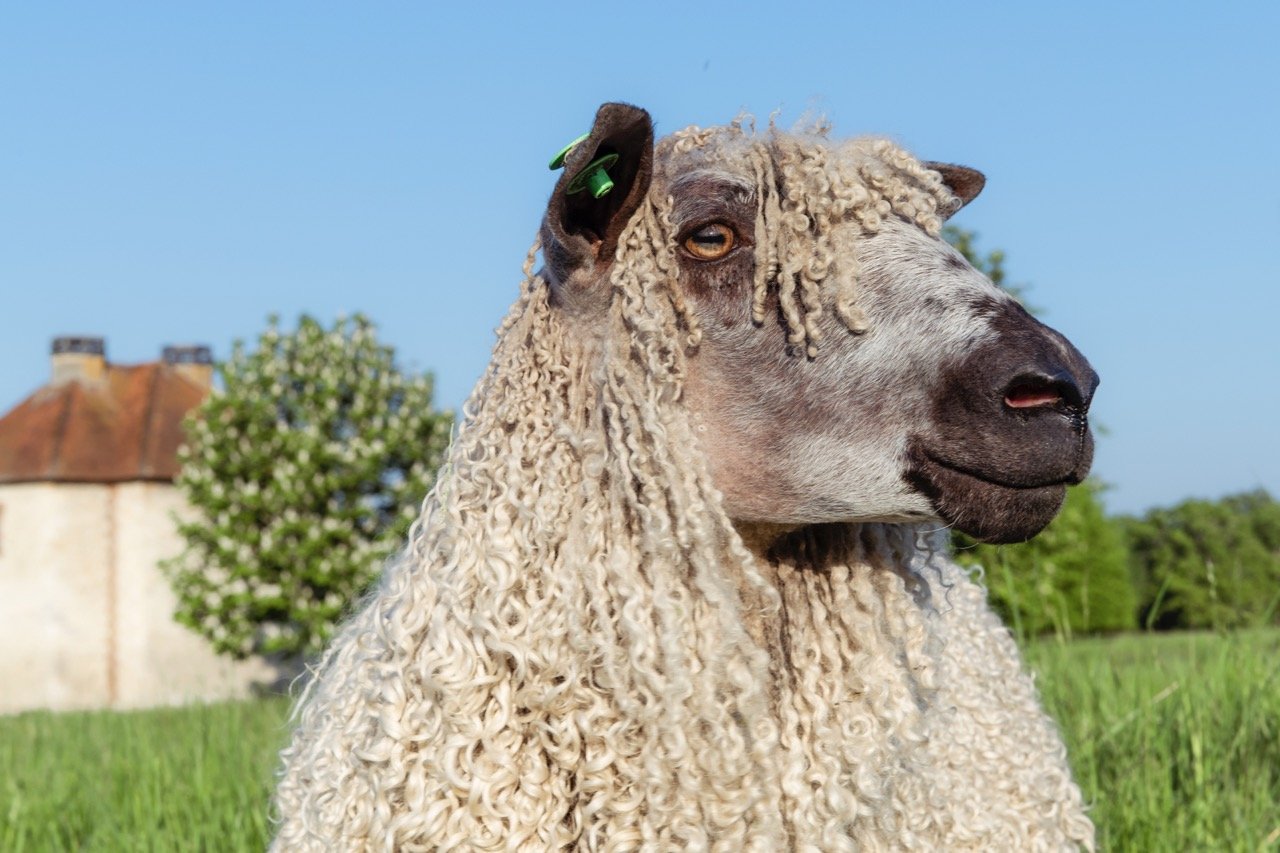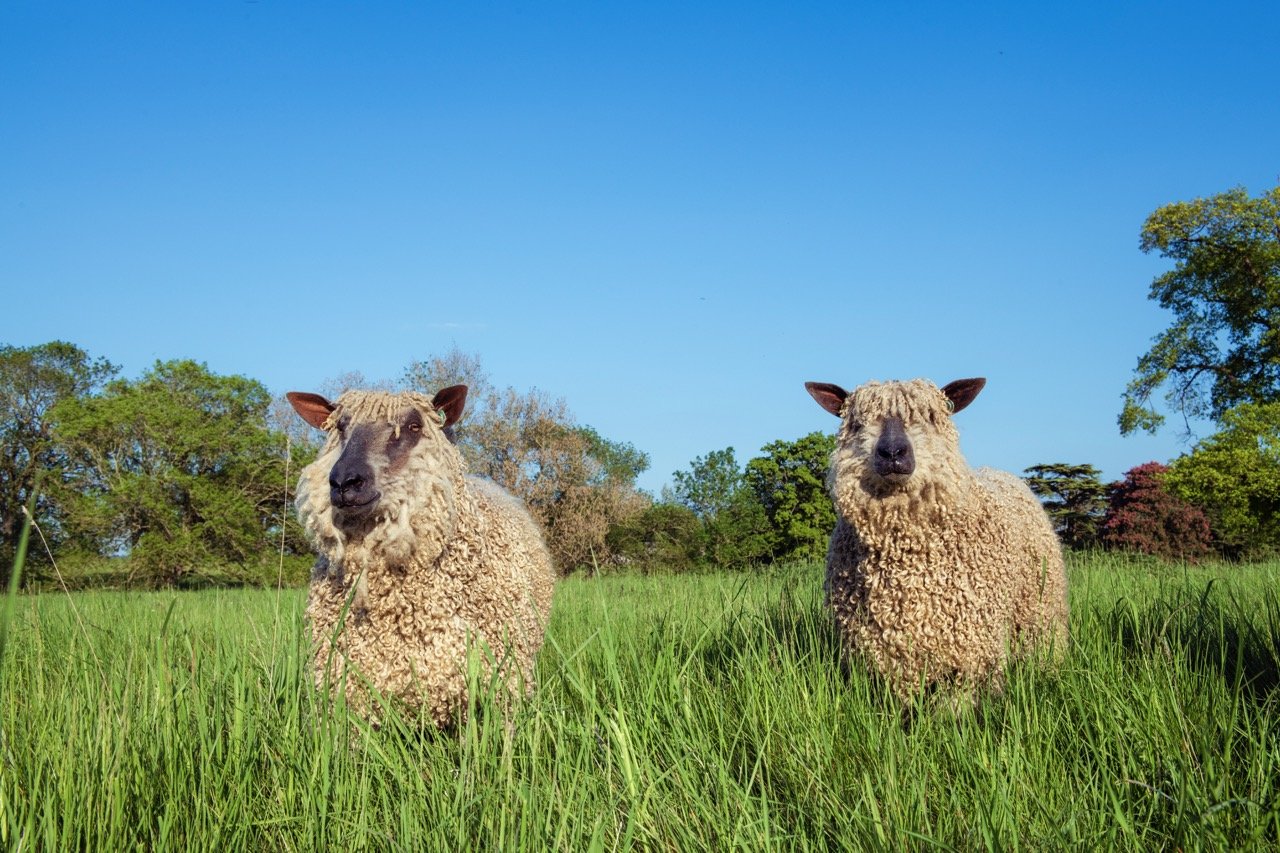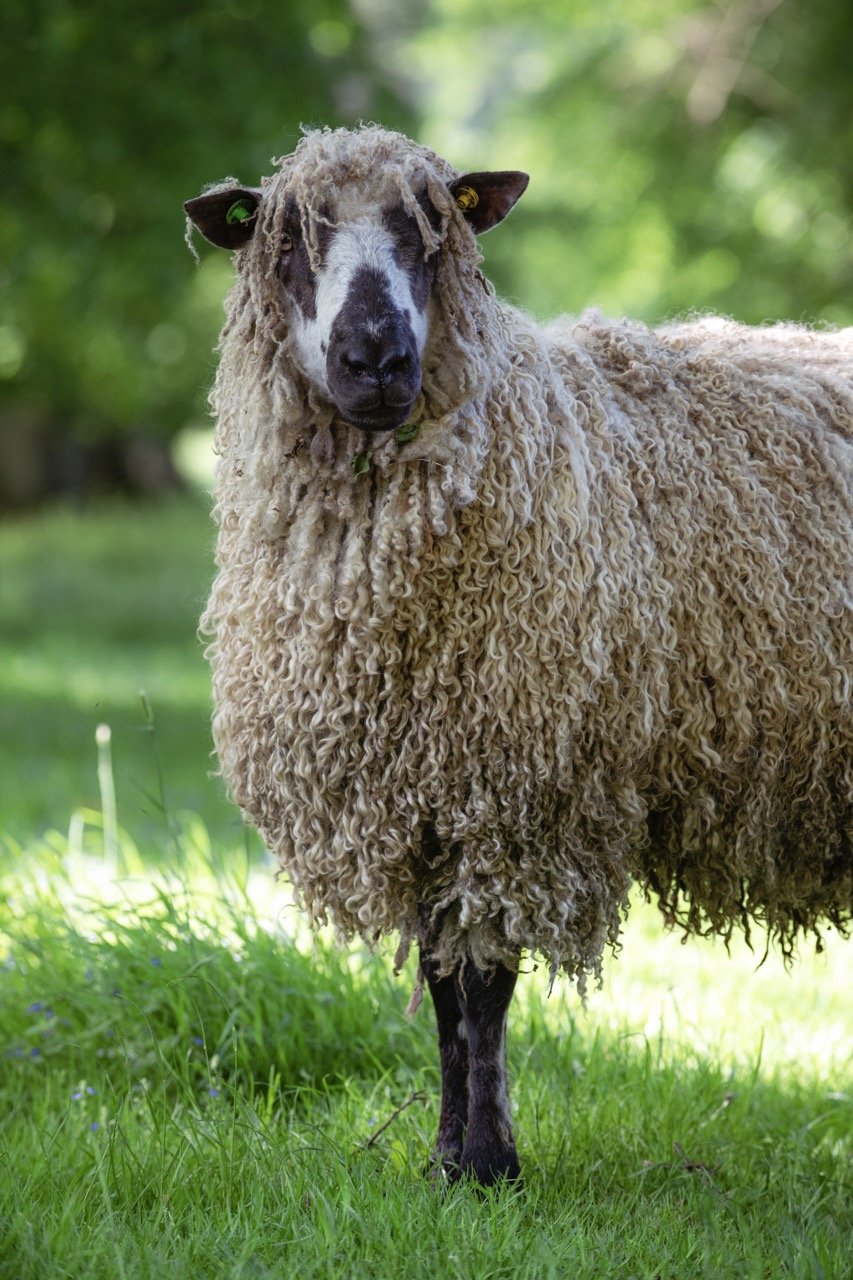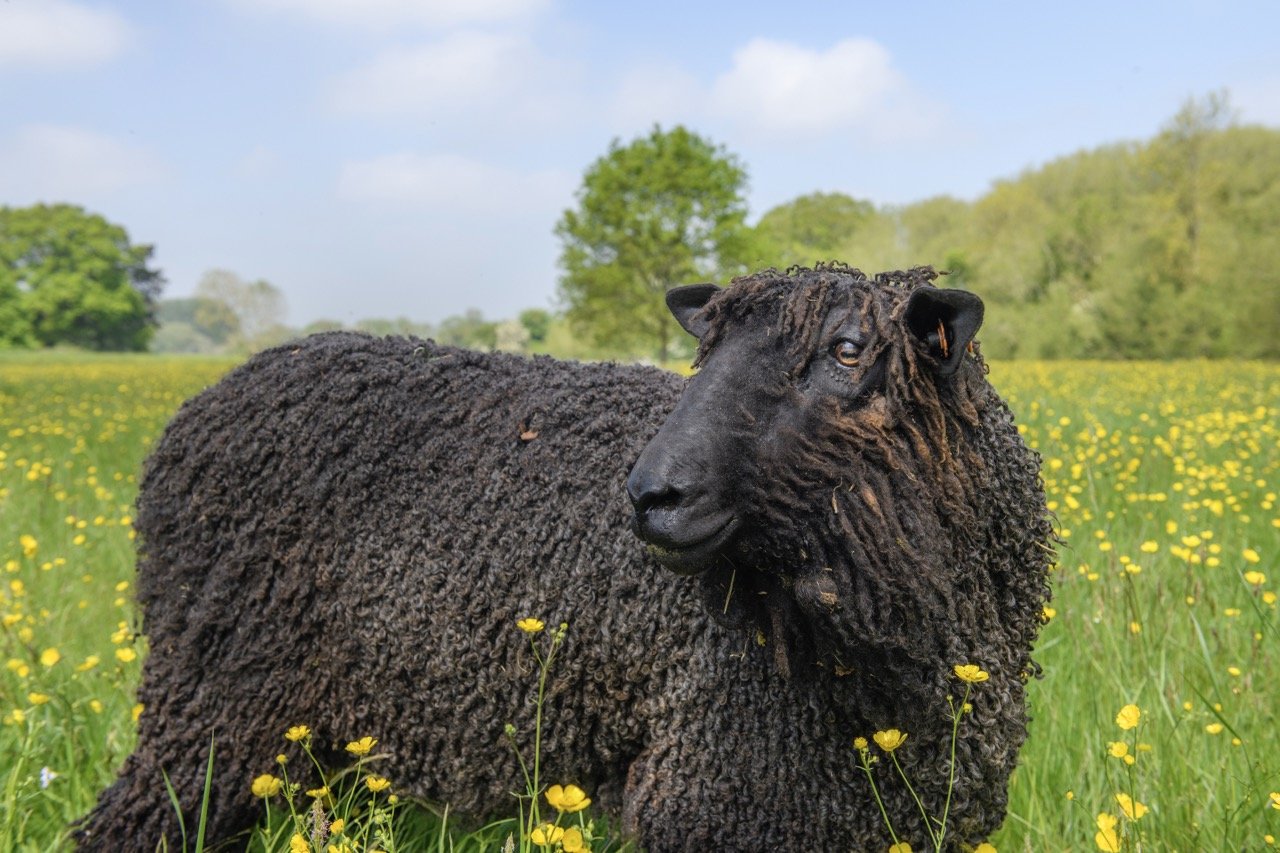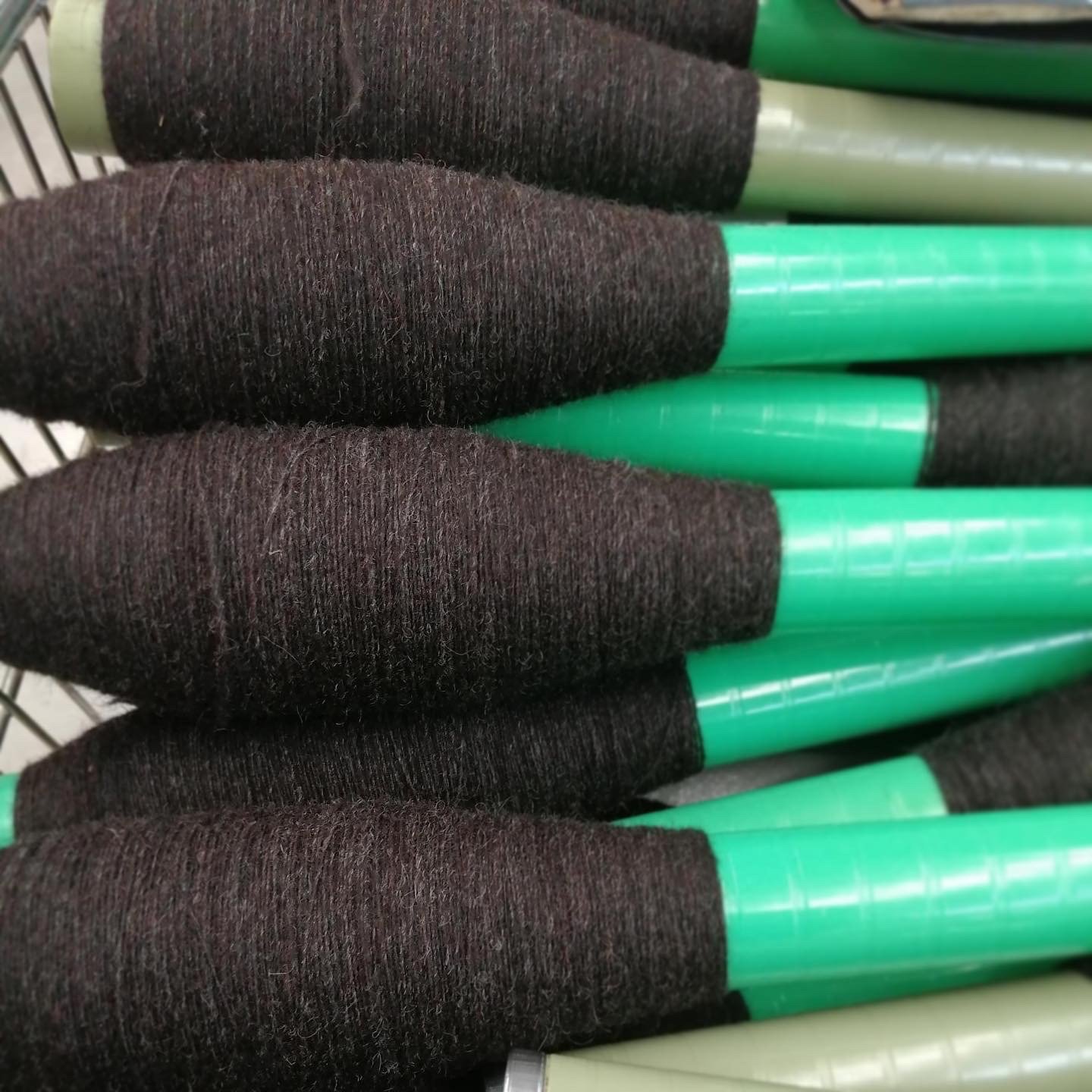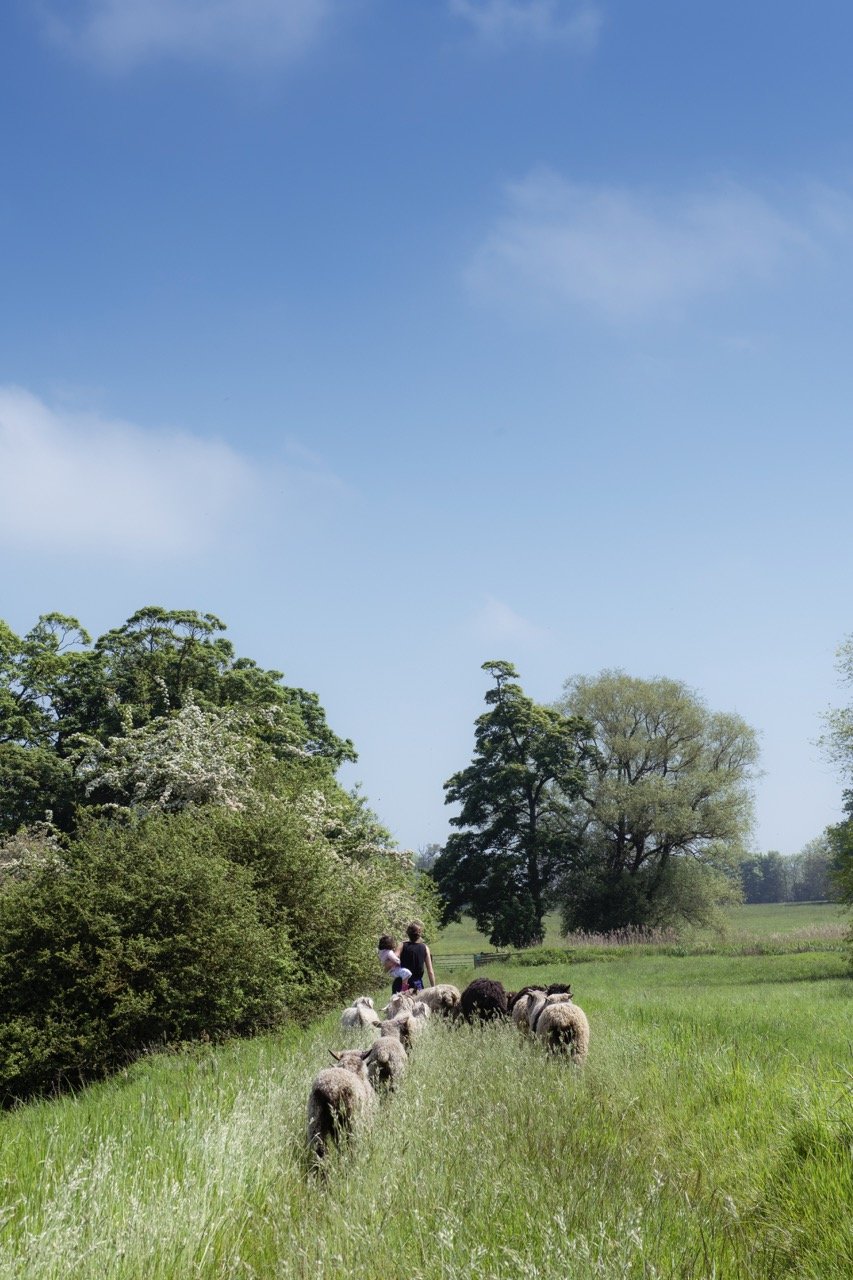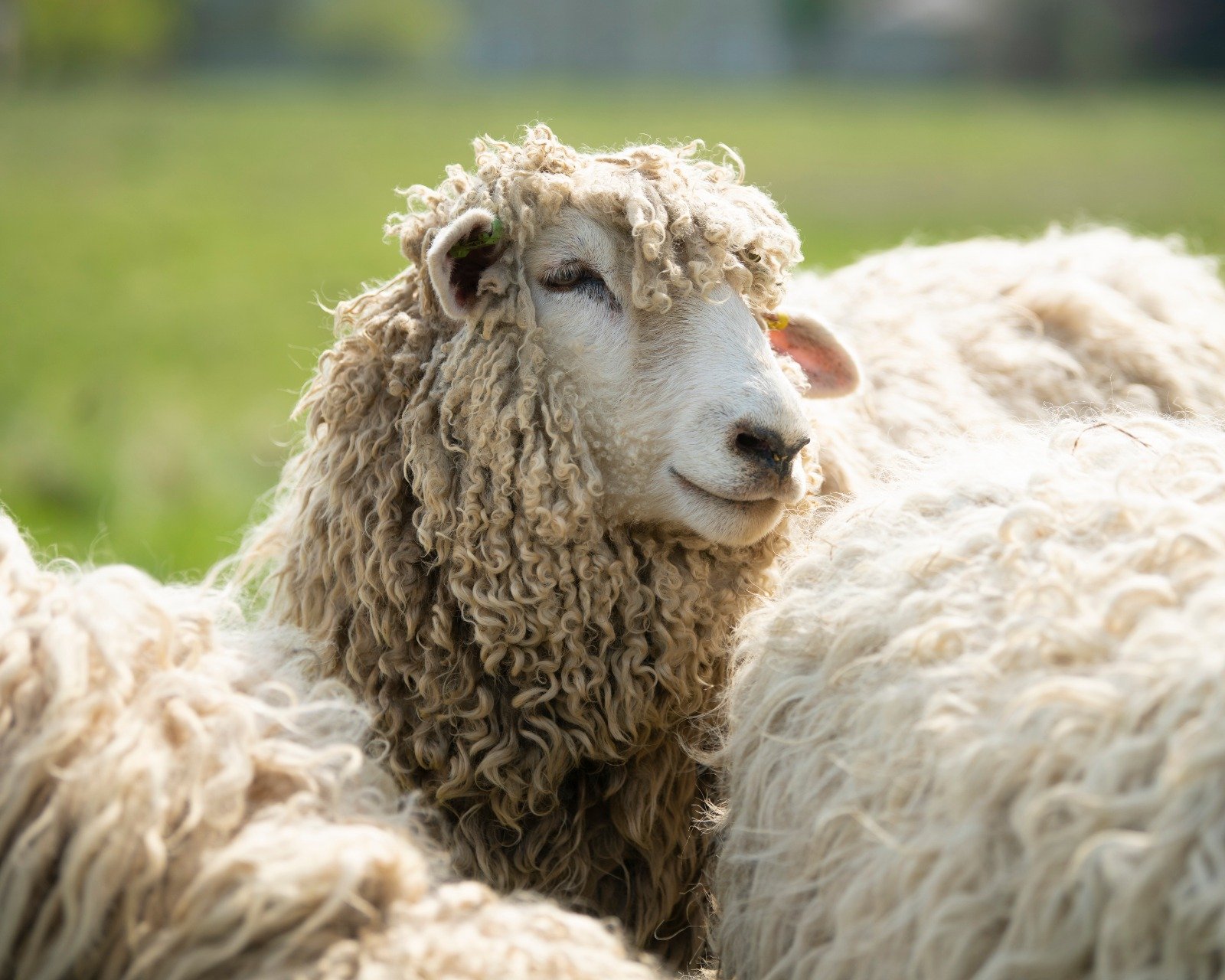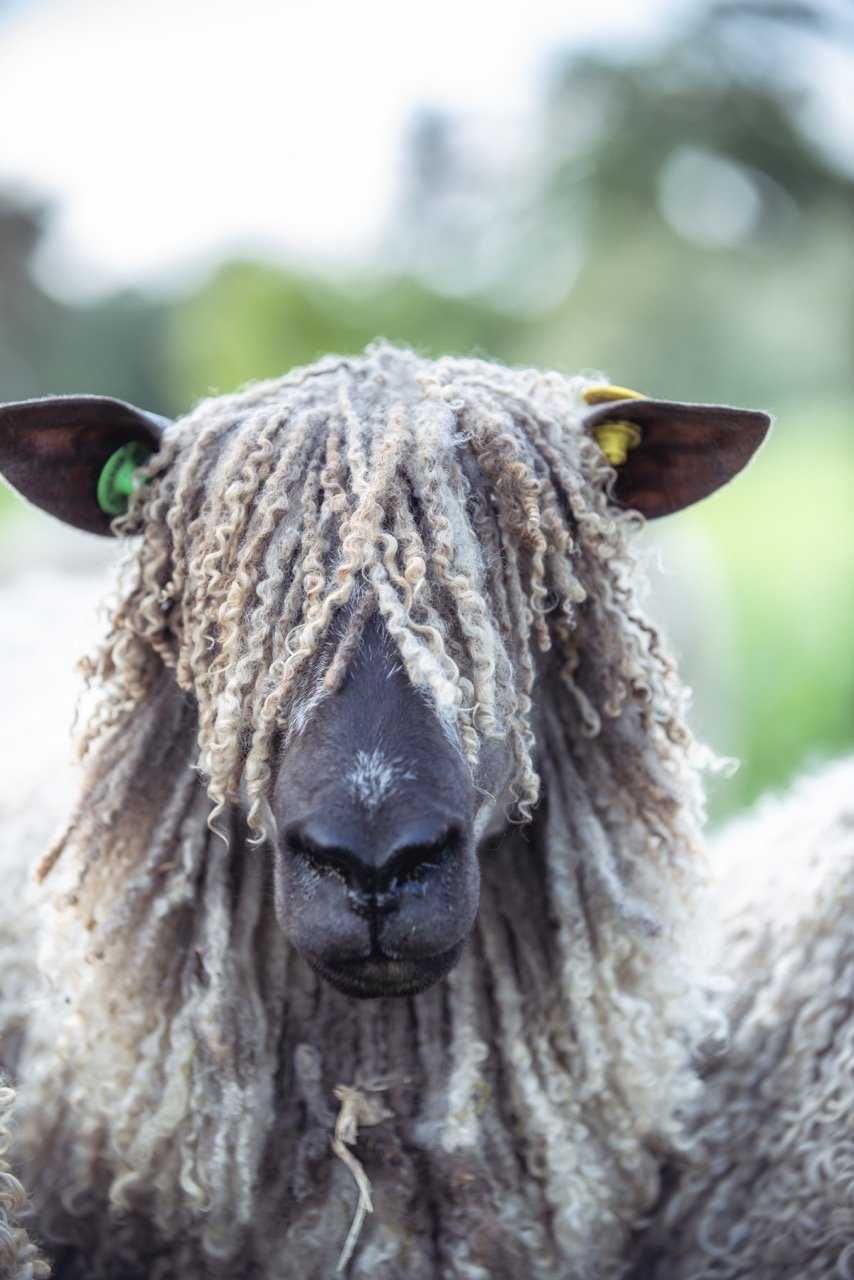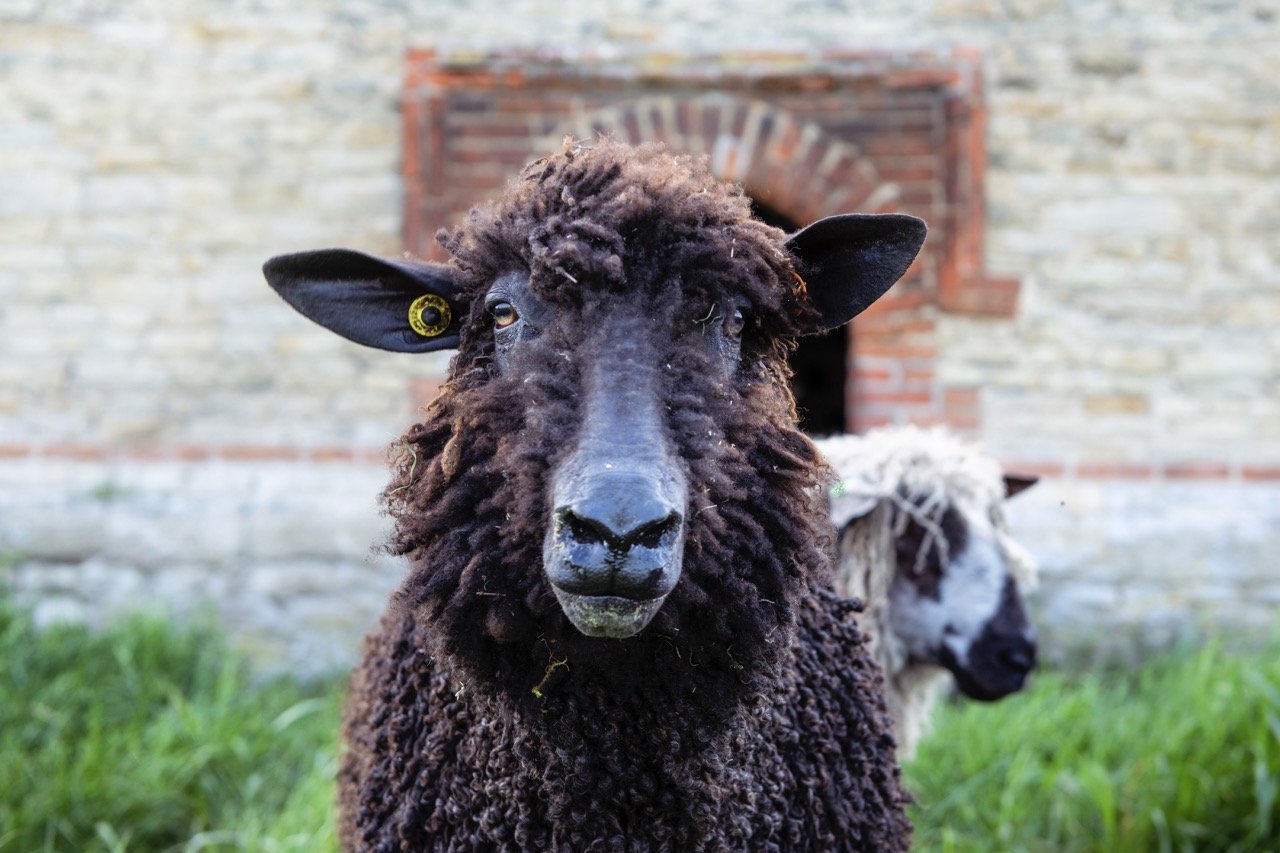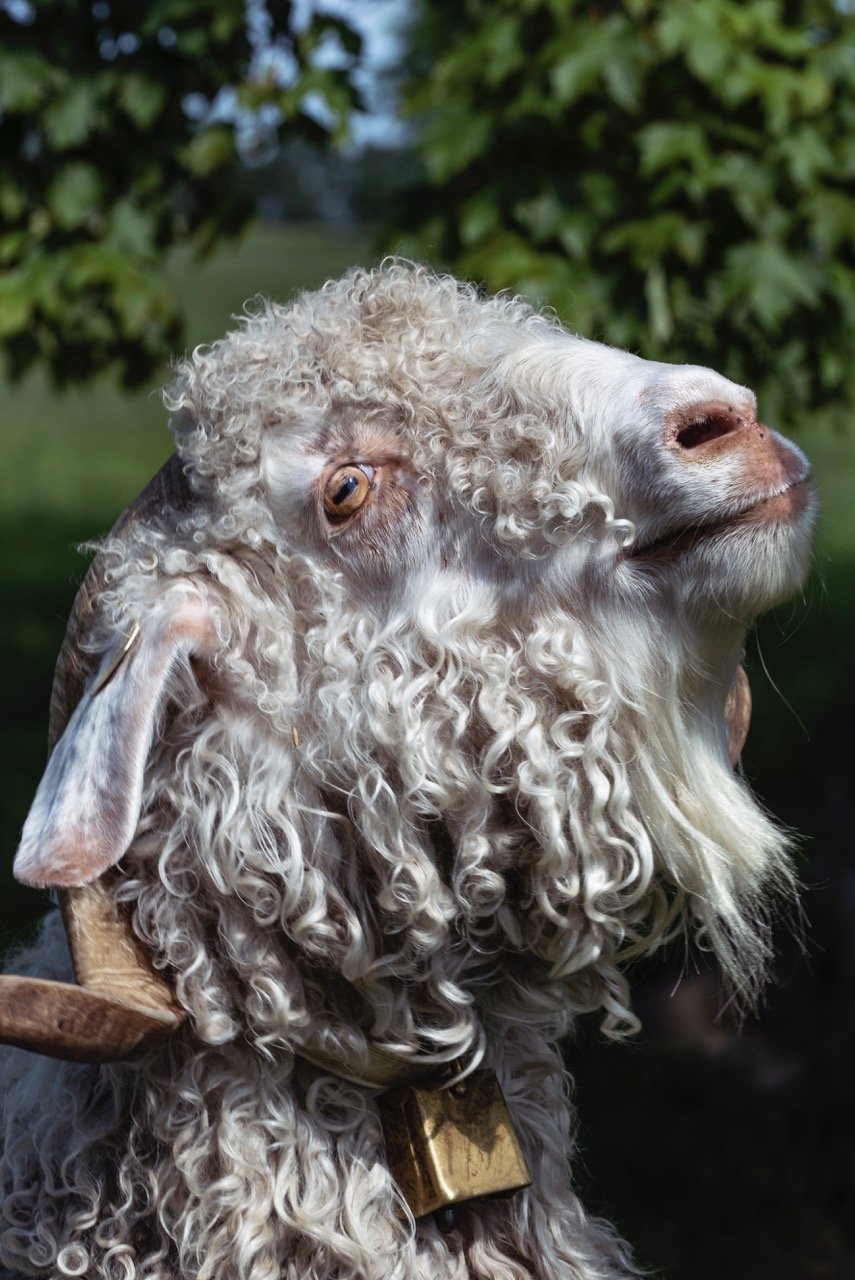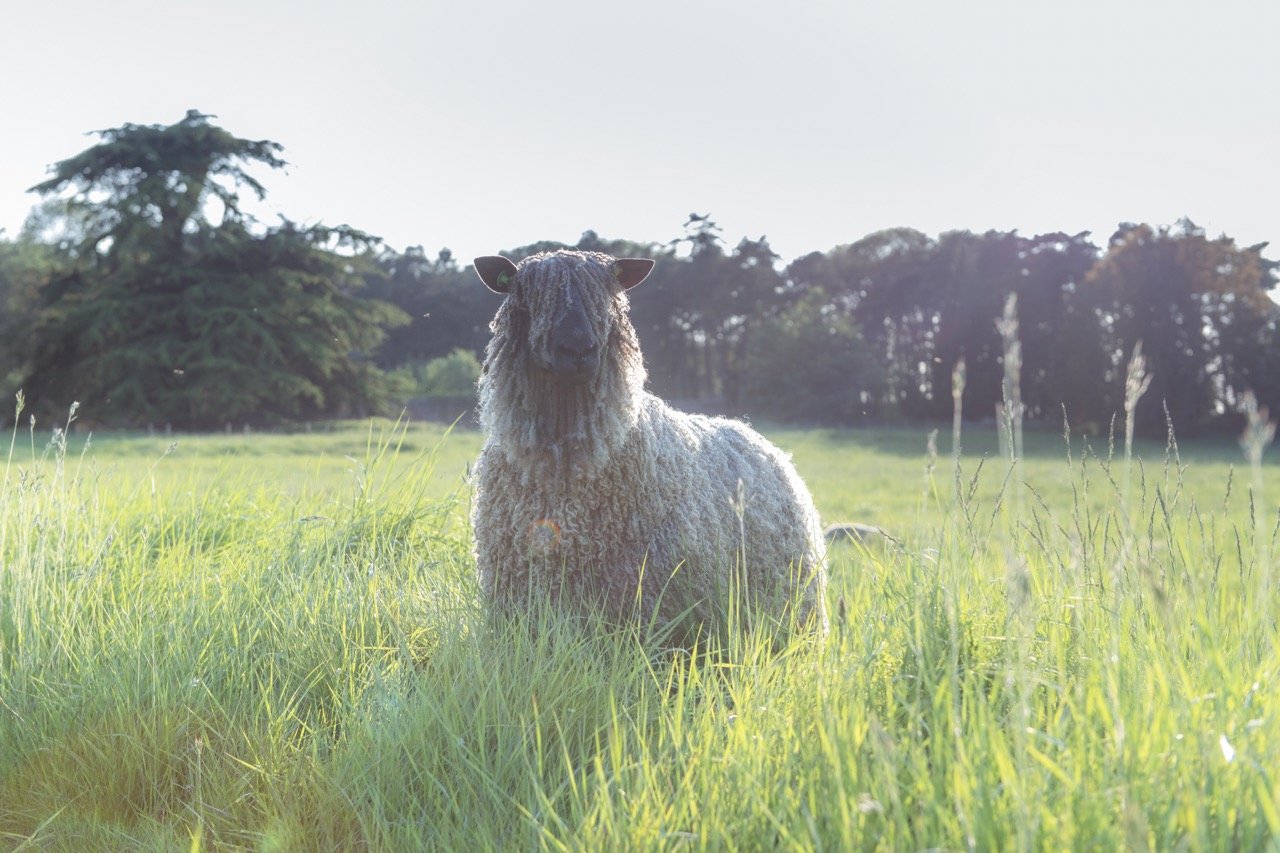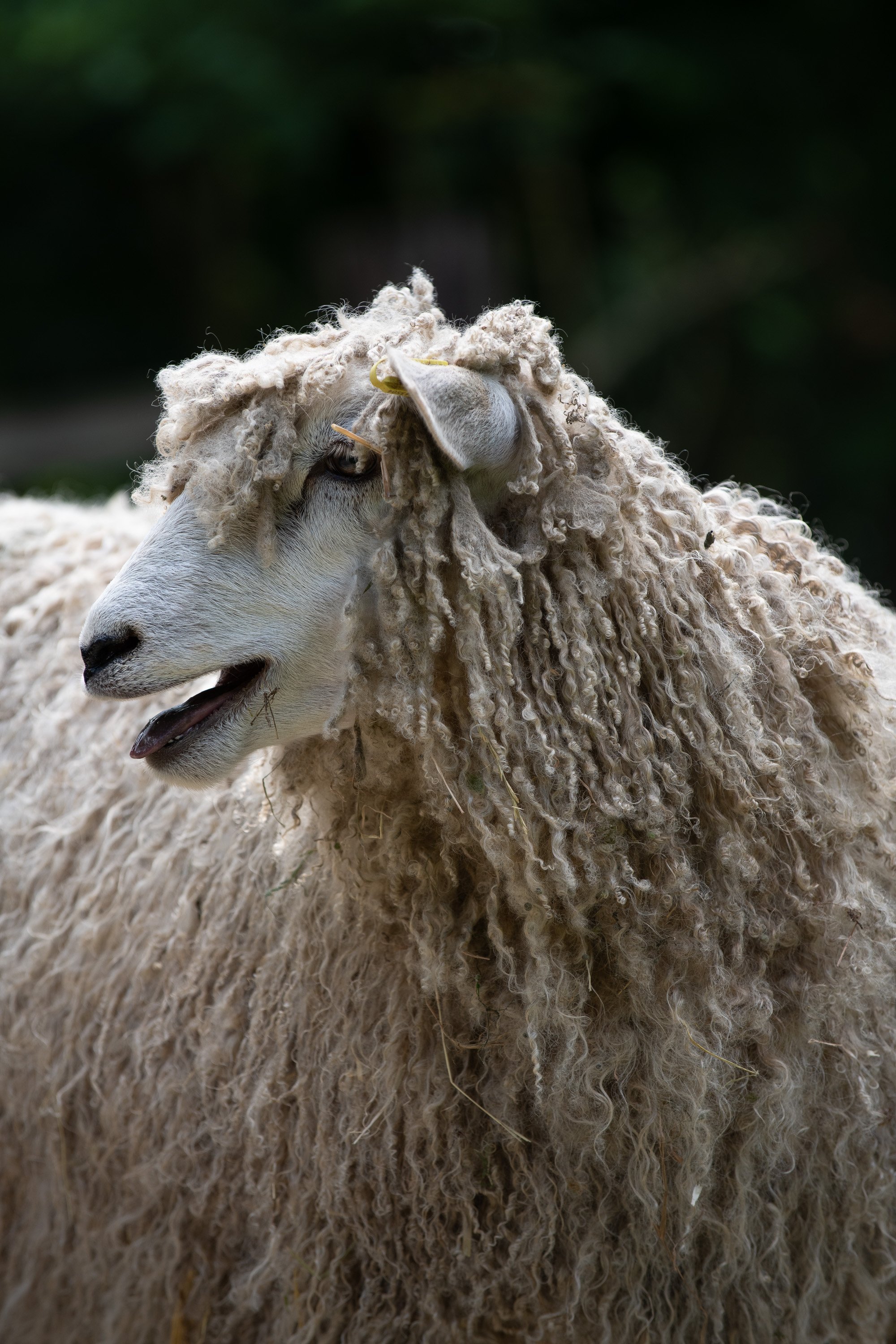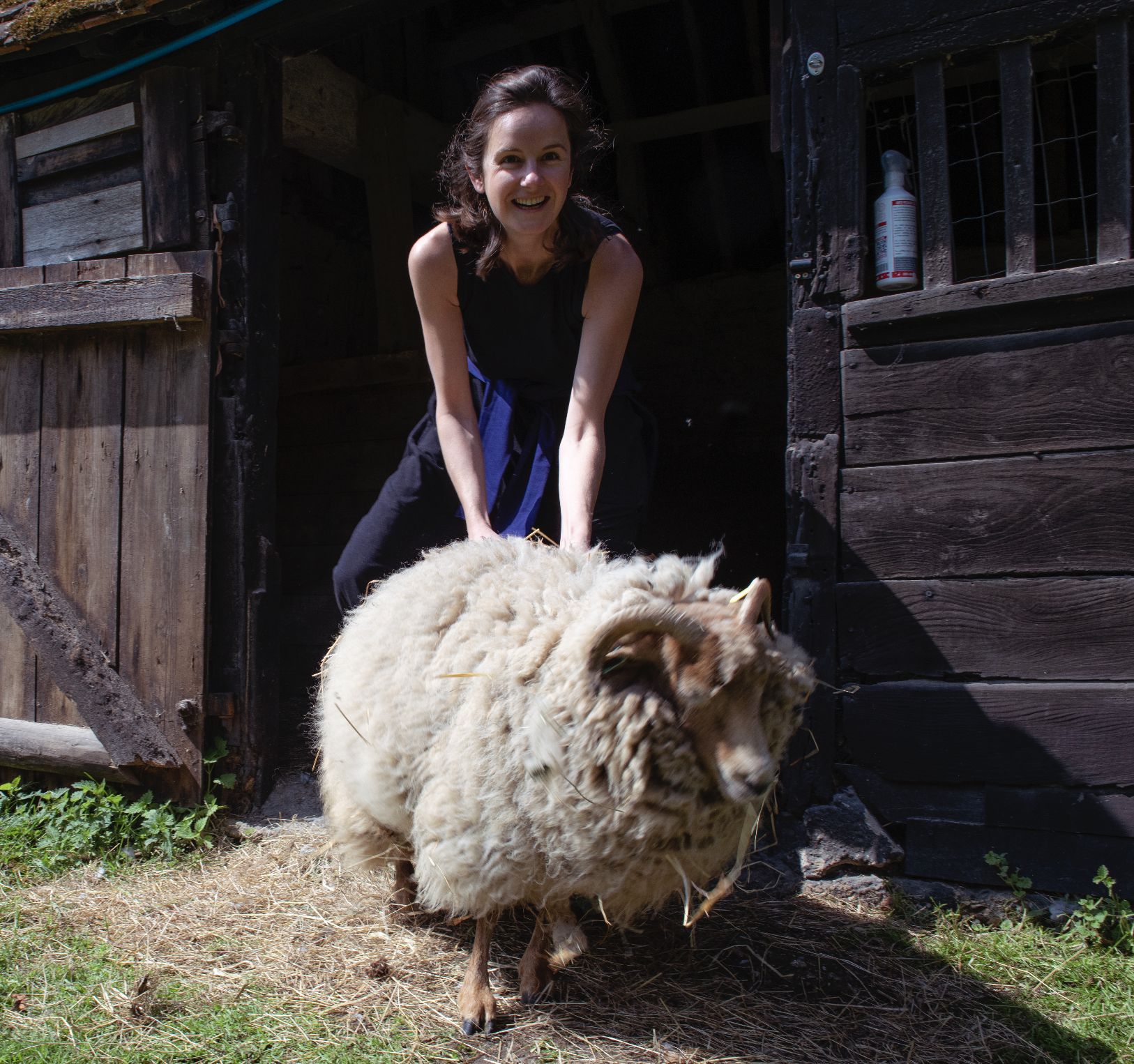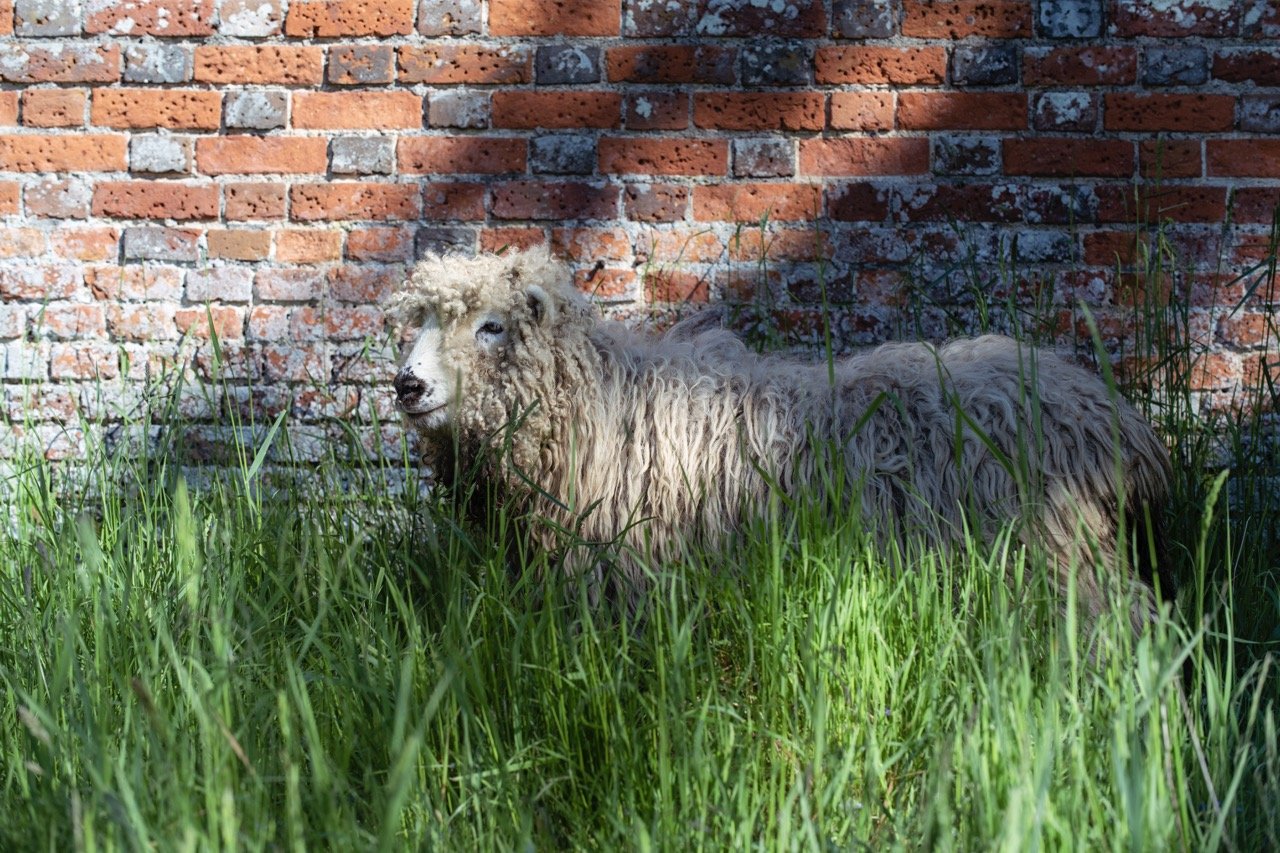The Angora goats (mohair) with Wenselydale Mamas and their teens
It’s said that even the most hardened of hunters has put down his gun on becoming a parent; after all, it is only natural to resign from killing when you have new life to nurture. I had, for some time, been conscious of my environmental footprint, but in becoming a mother in 2018, I found myself evermore avidly fuelled by eco-awareness and a concern for life. So when I moved to the countryside at lockdown, I was presented with the opportunity I didn’t know I had been looking for - to extend my work in the garden beyond its walls, and to widen my passion for rare plants into the broader landscape. I discovered that could be much more direct in my approach to sustainability - to make my own immediate impact on the land around me: I could eliminate household waste by keeping animals for whom it was fodder, I could encourage insects by managing the land with sustainable grazing, I could manage pernicious weeds using goats, limit the resident tick population using peacocks, I could encourage new plant life by fertilising through animal waste - all this and so very much more - and, for the first time, I found myself involved day-to-day with animals.
Joy, with the longest fleece of any of my Teeswaters - and the longest legs
The question though, was how and which animals to use to create a land-benefitting, waste-productive cycle. I realised then that I had never thought much about the sheep that punctuate so much of our British landscape. Those that sprung to mind were the pen sprawled woolly friends of Henry Moore, but beyond his sheep, I’d never met one of distinct character. I soon discovered that they aren’t all white and fluffy - there is a wonderful array of breeds that cover the full spectrum of appearance: from the short soft-haired Castlemilk Moorit that looks and acts like a deer, to the largest longwool Wensleydales who remind me of rhinoceroses. I set about growing a flock of rare breed ‘at risk’ and ‘endangered’ sheep to graze 135 acres. I selected various coloured breeds with different fleece qualities and characters - as well as distinctly different personalities - after all, these sheep were to live with me for life. My first criteria was to chose sheep for rarity for the purpose of breed preservation; my next priority was for quality fibre. I selected the largest Teeswaters weighing in at some 90kg as ewes and 140kg rams, to the smallest Portlands and Black Welsh Mountains, at 45kg a ewe. Soon, my flock had grown to 60 - and what friendship groups they have formed!
The shortwool sheep breeds in my flock include the Castlemilk Moorit, Black Welsh Mountain, White Faced Woodland, Hill Radnor, Portland, Shetland. The Longwool sheep breeds include: Teeswater, Wensleydale, Lincoln Longwool. Slow to mature, these distinct and varied breeds have been abandoned by farmers in search of breeding for those hybrids who can mature fast for the meat market and produce multiple lambs. It’s interesting to see that our young take a good couple of years to reach their adult size, even three years.
Ophelia, Ortense, Olga and Olive the mohair nanny goats whose fringes need a regular trim…
Next, I introduced the browsers: a herd of goats to tackle the pernicious weeds that had sprung up across the newly un-topped grass land. There are not many goat breeds that produce fibre, so I chose the Angora (mohair), but they proved laid back and unmotivated, and since goats are a friendly bunch and there was much browsing to be done, I added the two critically endangered British breeds: the Bagot (the oldest breed dating back to 1389), and the Golden Guernsey. Finally my daughter insisted that we top up the herd with a couple of Anglo Nubians, which aren’t at risk but which resemble long-legged rabbits with their great big floppy ears, and since they are so tall, I agreed, for they can reach higher than any other.
Today my smallholding consists of sheep who provide the ethical bi-product of truly free-range wool, and goats for clearance and weed management. The two alpacas Marley and Bigtooth protect the flock, while the two critically endangered Large Black pigs Georgie and Georgina Georgeous are busy turning over the soil, fertilising and devouring household food waste that no one else will eat. The ducks, chickens, turkeys, quails all provide wonderful fertiliser (and eggs!), while the guinea fowl and peacocks manage ticks and act as the look-out fox alerts for wandering chickens, as well as acting as my personal burglar alarm.
Mash, a Greyfaced Dartmoor whose fleece staple length drags to the ground like a long dress - it makes wonderful coarse garden twine, the only fibre we don’t use for yarn
I have strict rules. My animals should be able to live as natural a life as possible: bonds between them must be encouraged not shattered (mothers are never removed from young), they must be free to navigate the land as they choose, they must not be used for human purpose other than as a bi-product. No animal is ever slaughtered. My shepherdess promise is to ensure that I always to my best for every single one of the animals whether the smallest of poultry or the largest sheep. I never pen sheep or goats into a paddock unless they’re breeding or injured because when you watch sheep roam a large and varied area it is soon clear that they enjoy different vegetation - and though grazers, they too browse.
And so, in my farm I have found myself an extension of my practice in the garden, a new tool to not simply manage the land but to rehabilitate it. These animals tie me to the land in a more profound and grounded manner. Above all, I have been surprised and touched by the feeling animals have for one another when they are free to form friendship groups and bonds. And for I myself? Well, I have found new friends.
Shortwool sheep breeds include: Castlemilk, Black Welsh Mountain, White Faced Woodland, Hill Radnor, Portland, Shetland, Herdwick
Longwool sheep breeds include: Teeswater, Wensleydale, Lincoln Longwool
Goat breeds include: Bagot, Golden Guernsey, Angora, Anglo Nubian
Photographs by Astrid Harrisson www.astridharrisson.com
Teeswater Uma, as graceful as a horse with her gorgeous bright fleece and long legs
Primitive Baa the Portland with her golden fleece - one of the only breeds not to have been cross bred when the Romans arrived in Britain, thanks to their remote outpost on Dorset’s Isle of Portland
Uma’s daughter young Panda in a spaghetti of lustrous Teeswater fleece
Uma, her fleece grows to 25cm staple length and makes wonderful lustrous wool
Large Black sow Georgina Georgeous at work clearing the walled garden of pernicious weeds
Who needs a digger? Georgie Georgeousness, one of my two critically endangered Large Black pigs. Only around 84 breeding females remain.
Gentle giant Henry our Teeswater ram, the only ram I trust (out of season!), a very special sheep
Cleaning Henry’s huge fleece of thatch and before sending it off to the mill for processing
Imran and Zog, my two mature ewe White Wensleydale ewes with their blue noses
The Castlemilk Moorits, bred to behave like deer - and look like them too a lovely soft brown fleece that lightens in the sun
Henry, the biggest of our rams, Uma and Joy’s husband, father to many
Ram Henry begins shearing day with specialist longwool shearer Matt, who I pay double to go double carefully at half the speed
Maya a critically endangered White Faced Woodland, named after the Buddha’s mother who dreamt of a white elephant; she has rich lanolin in her fleece
Happy the critically endangered Golden Guernsey nanny - a goat who thinks she’s a little girl
Uma’s fleece becomes a dress
Uma’s lovely bouncy yarn dyed pink
The Lincoln Longwools, with their gleaming white fleeces
Mala, with her beautiful slightly red-hue ‘black’ wool can produce a 6kg fleece. I mix it with Black Welsh Mountain fleece for softness and bounce
At the mill, freshly spun Wensleydale and Black Welsh Mountain yarn
The Angora girls Ophelia, Ortense and Olive follow me down to feed billy goat Doodh, and his two wether sons
The Elizabethan dovecote, now sheep shelter
The White Wensleydale fleece is one of my favourite, unlike the spaghetti of the Teeswater it curls forwards and backwards on itself
Contrary what I’ve been so often told, sheep don’t simply eat short grass, they happily enjoy the grass seed heads full of nutrients
Encouraging the Shetland twins Bleat and Blurt while Uma watches over
Shelly, the Buff Orpington cockerel, boss of the yard
Three Hill Radnors, Teddy, Lucy and Eardwina
One of the Lincoln Longwools
Joy has a tint of grey in her locks as do all her children
Nearing adult weight: 350kg
Teeswater fleece mid-growth
Supermodel Uma with her very fine wide eyes, broad nostrils and upright pointed ears
An excellent mother - Uma and her daughters Umletta and Umlettina
Lala with her black tongue
Nala with her long leathery Wensleydale nose, high eyes and pointy dark ears
Lala, a wonderful large Black Wensleydale ewe, the rarest sheep some say, out of demand because the black wool cannot be dyed
Naughty and hard to handle: Angora billy goat Doodh, meaning ‘milk’ in Hindi. He’s blessed the girls with many kids…
Young Bleat the Shetland with her lovely subtle grey fleece, twin sister to Blurt
The young Bagot goats tackle the overgrown walled garden
Frizzle freckle
Mr and Mr Gobbledegook, spared Christmas
Teddy, a teddybear Hill Radnor
My absolute pride and Joy; when is a sheep is like a dog - when Joy curls up at my feet after a long day grazing.
Joy’s daughter Ananda, named after the Buddha’s disciple, she has the same grey markings as mum
Lincoln Longwool Lolly
Uma’s daughter Panda growing up
Free range
Maa, cousin of Baa, another primitive Portland with her golden glow and pencil line down her horns. Her fleece is gorgeous with a fine crimp
Maa with a broken hip gets carried home, the start of long rehabilitation
Maa leaves the vets after orthopedic dog surgery for a fractured hip bone, not an operation they’d performed on a sheep before!
Maa finally on the mend
One of the challenges of ‘free range’ sheep for fibre (particularly with the longwools) is the debris that becomes tangled in their fleeces
Mish, one of our four Greyfaced Dartmoor, Mish, Mash, Mosh and Mush
Ophelia the soft mohair angora nanny
One of an army of lavender guinea fowl, the security system
Peacocks are very quick to spot a fox and issue an almighty warning to all
A purple peahen in the long grass - peacocks are particularly good at keeping down the tick population - a particular bother for sheep
Millefeuille the Polish Crested chicken
Chickens of different shapes and sizes
The runner ducks, bred like pinballs to neatly gobble up snails in the paddy fields of Asia
‘Partridge’ a little Barbu d’Anver, the smallest chicken
The friendship bonds between different such distinctly breeds makes me smile - “same same but different”
Joy curling up at my feet after a long summer’s day out grazing


